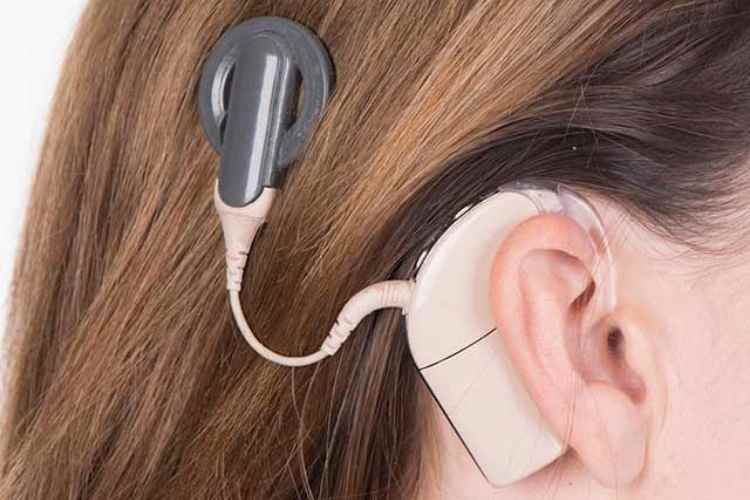In this blog we are going to tell you about COMPARISON BETWEEN AUDITORY BRAINSTEM IMPLANT AND COCHLEAR IMPLANT, so read this blog carefully to get the complete information.
Meaning Of Cochlear Implant And Auditory Brainstem Implant
The Auditory brainstem implant (ABI) is quite related to a cochlear implant. Though, the vital difference is that instead of transmitting sounds to the cochlea, the ABI creates the sounds that travel to the brainstem’s auditory region whereas The cochlear implant device communicates the hearing information instantly to the brain by stimulating the auditory nerve.
Analogy
Both devices are being used for helping people who have hearing issues.
Cochlear Implant
A cochlear implant is a small, surgically implanted, complicated electronic device that helps in transferring a sensation of sound to a person who has moderate-to-profound sensorineural hearing loss or is profoundly deaf. The implant includes ; (1) The Speech Processor (outside the body) and (2) The implant (inside the body). The machine stands behind the ear by an Ear, Nose, and Throat surgeon just under the skin.
Auditory Brainstem Implant
An auditory brainstem implant (ABI) is a device that provides a sensation of sound to a deaf person.
It is a surgically implanted device in the brain of a person who is deaf (whose auditory nerves are damaged).
Comparison Between Auditory Brainstem Implant And Cochlear Implant
DEFINITION
AUDITORY BRAINSTEM IMPLANT
An auditory brainstem implant (ABI) is a device that provides a sensation of sound to a deaf person. It is a surgically implanted device in the brain of a person who is deaf (whose auditory nerves are damaged).
COCHLEAR IMPLANT
A cochlear implant is a device that ensures hearing of high-frequency sounds and transmits the actual ability to hear.
RELATED – Tadalafil 20mg & Sildenafil 100mg: Generic Viagra Guide
BENEFITS
AUDITORY BRAINSTEM IMPLANT
- It develops the ability to detect and differentiate men’s vs women’s voices; kids vs adult voices etc.
- It is improving face-to-face communication which would aid in lip reading ability.
- It Increases sound awareness.
- It Helps to identify environmental sounds like the ringing of the phone, vehicle horns, the barking of dogs, etc.
COCHLEAR IMPLANT
- It helps people to make telephone calls.
- Adults often benefit instantly.
- Many people can watch TV easily.
- It helps people to enjoy music (for example piano or guitar,)
- Most perceive loud, medium, and soft tones.
- People can also understand speech without lip-reading.
SIDE EFFECTS
AUDITORY BRAINSTEM IMPLANT
People with Auditory brainstem implant:-
- Meningitis means- an inflammation of the fluid and membranes surrounding your brain and spinal cord.
- People feel dizziness and pain.
- May suffer from facial nerve weakness
- It results in leaks of fluid found in the brain and spine.
- May cause Injury to the facial nerve
- Also, result in Cerebrospinal and Perilymph fluid leakage.
- The disease of the skin wound.
- Blood or fluid collection at the area of surgery.
- People have Attacks of dizziness or vertigo
- Experiencing buzzing or ringing sound in the ear
- Effect on Taste disturbances
- Impacts on Numbness around the ear
- Reparative granuloma
COCHLEAR IMPLANT
People with cochlear implants:
- People may hear sounds differently
- People lose residual hearing
- Results in different and uncertain effects
- People are not able to listen properly
- People are not able to understand the language well
- In some of the cases, their implant fail
- They are not able to upgrade
- They are not able to have some medical examinations and treatments
- It damages their implant
- People cannot afford them because they find expensive
- They will have to use it for the rest of the life
- They result in lifestyle changes
- People will have to be careful of static
- May have less ability to hear
- It causes irritation
- Can’t let the external parts wet
- People may hear strange sounds
PARTS
Auditory brainstem implants consist of 3 main parts:
- A microphone and sound processor.
- A decoding chip
- Electrodes
Cochlear implants are the two different types of implantable devices:-
- A cochlear implant
- A bone-anchored hearing aid (Baha).
Conclusion
An auditory brainstem implant (ABI) is a device that provides a sensation of sound to a deaf person whereas A cochlear implant is a device that ensures hearing of high-frequency sounds and transmits the actual ability to hear. The auditory brainstem implant adopts technology related to that used in a cochlear implant. The main dissimilarity is where and what the electrodes stimulate. With the cochlear implant, the formation of electrodes enables the auditory nerve in the cochlea. The ABI’s array of electrodes is positioned directly on the brain stem. They bypass the cochlea and the auditory nerve completely. Both devices are being used for helping people who have hearing issues.
Cochlear implantation in adults is cost-effective as compared to the Auditory brainstem implant.
Auditory brainstem implants restore important sound awareness in most people with hearing issues, but results remain modest in comparison to the normal Cochlear implantation uses.
53.4 percent of adults with prelingual auditory loss and 82.0 percent of adults with post-lingual auditory loss improved their speech understanding ability.
We Hope this blog is sufficient enough to provide the information about COMPARISON BETWEEN AUDITORY BRAINSTEM IMPLANT AND COCHLEAR IMPLANT. Thanks for reading this blog.

